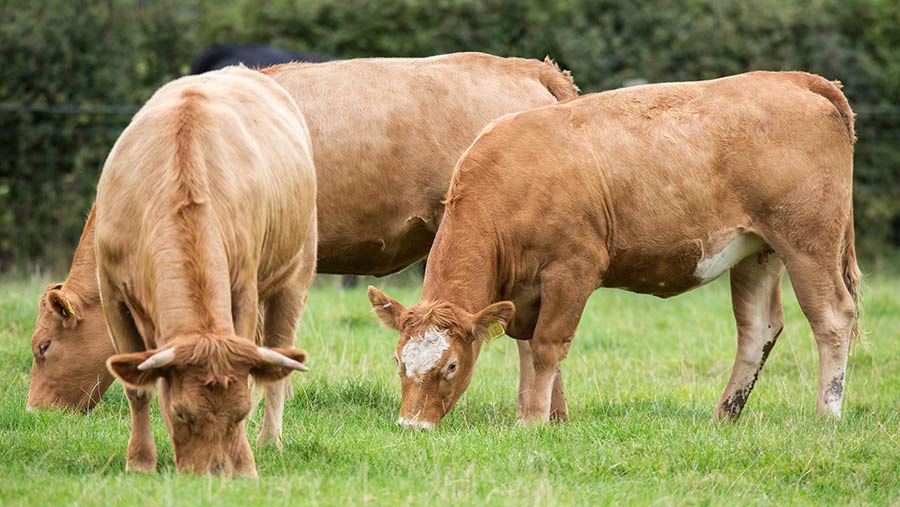How government push for net zero could affect agriculture
 © Tim Scrivener
© Tim Scrivener Improvements in production efficiency rather than cuts in livestock numbers are seen as the way ahead to net-zero carbon emissions in England, the government’s new strategy document reveals.
Launched on Tuesday 19 October by prime minister Boris Johnson, the Build Back Greener report sets out plans for meeting national climate change goals across all sectors of the UK economy.
See also: £17.5m innovation fund available to farmers and growers
The fear for agriculture had been that the government might take steps to reduce livestock numbers as a way of cutting greenhouse gas emissions.
The Climate Change Committee had previously recommended a 20% cut in meat and dairy by 2030, rising to 35% by 2050 for meat only, and the National Food Strategy also calls for reductions.
Innovation
But the new “Net-Zero Strategy” document (which for agriculture operates on a devolved basis) contains no such measures, instead targeting “improved and innovative farming practices” as the main way to reduce agriculture’s carbon emissions.
“We will introduce a targeted set of financial incentives to improve animal health and welfare, and reduce emissions from animals, including action to identify and eliminate bovine viral diarrhoea, with pilots starting in late 2022,” says the document.
The government also plans to provide grants for new slurry stores and other equipment that can help reduce nitrate and ammonia pollution, and funds to limit methane emissions.
“Ruminant livestock are the leading cause of farm emissions, but feed additives with methane-inhibiting properties have the potential to reduce emissions, especially from housed cattle,” it notes, suggesting that regulation may also be introduced to “ensure maximised uptake of such products”.
Ambition
While cutting livestock numbers is seemingly off the government’s agenda, the targets are still ambitious. The document suggests that “75% of farmers in England will be engaged in low-carbon practices by 2030, rising to 85% by 2050”.
It envisages that the new Environmental Land Management (ELM) scheme will be a “powerful vehicle” for achieving net zero, supplemented by increased research and development funded via the Farming Innovation Programme.
The document also advocates the production of lower-carbon foods, noting that so-called “alternative proteins” (meat and dairy substitutes) could become “another great British food export”, but notes it will “take time to materialise”.
What else the Net-Zero Strategy recommends
- Increased R&D into net-zero agriculture through the Farming Innovation Programme (£17.5m just announced)
- A trebling of woodland creation grants to £500m through the Nature for Climate Fund (including agro-forestry)
- Restoration of 35,000ha of peatland by 2025, rising to 280,000ha by 2050
- New biomass strategy to encourage miscanthus and short-rotation coppice, to be launched next year
Reaction
Responding to the Net-Zero Strategy, NFU deputy president Stuart Roberts said achieving net zero by 2040 was work “farmers really want to do”.
“Government support is crucial, backing British farming to realise this ambition, so it’s great to see initiatives such as the Farming Investment Fund and Farming Innovation Programme that support investment in equipment and infrastructure.”
He also called for net-zero incentives to be included within the ELM scheme, as well as a greater focus on farming’s role in domestic bioenergy production.
Country Land and Business Association president Mark Bridgeman particularly welcomed the government’s ambition for tree planting, but said it was already significantly behind its target of 30,000ha of new trees a year by 2024.
“While the grants scheme in England is now more attractive, farmers will need long-term certainty if they are to plant trees on land that could have another use.”
